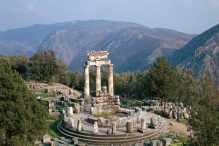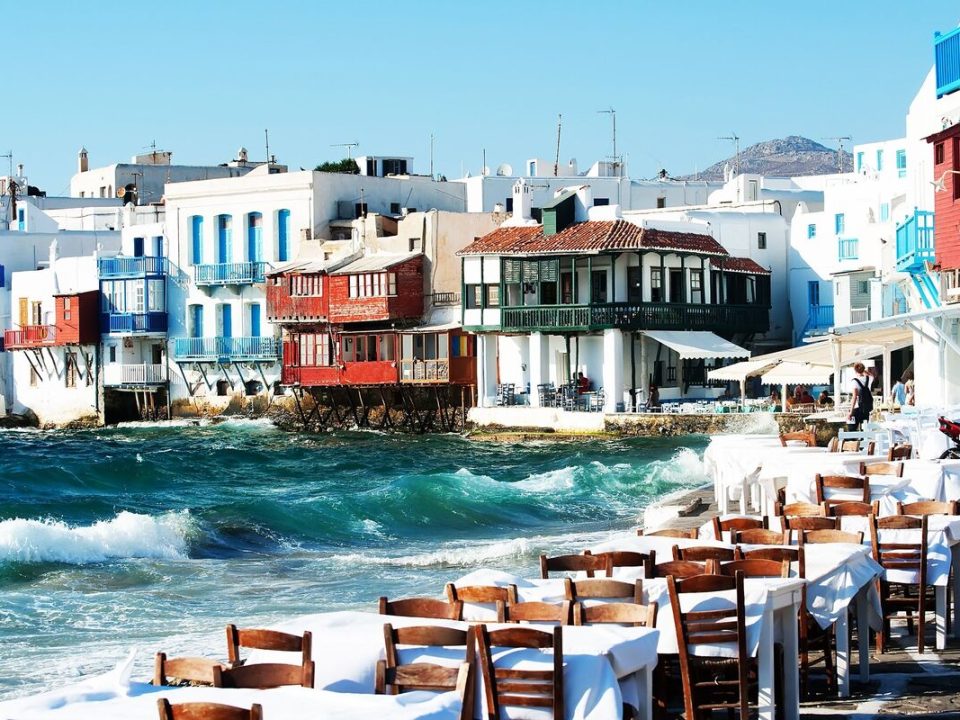Delphi, Greece: A Journey to the Navel of the Ancient World
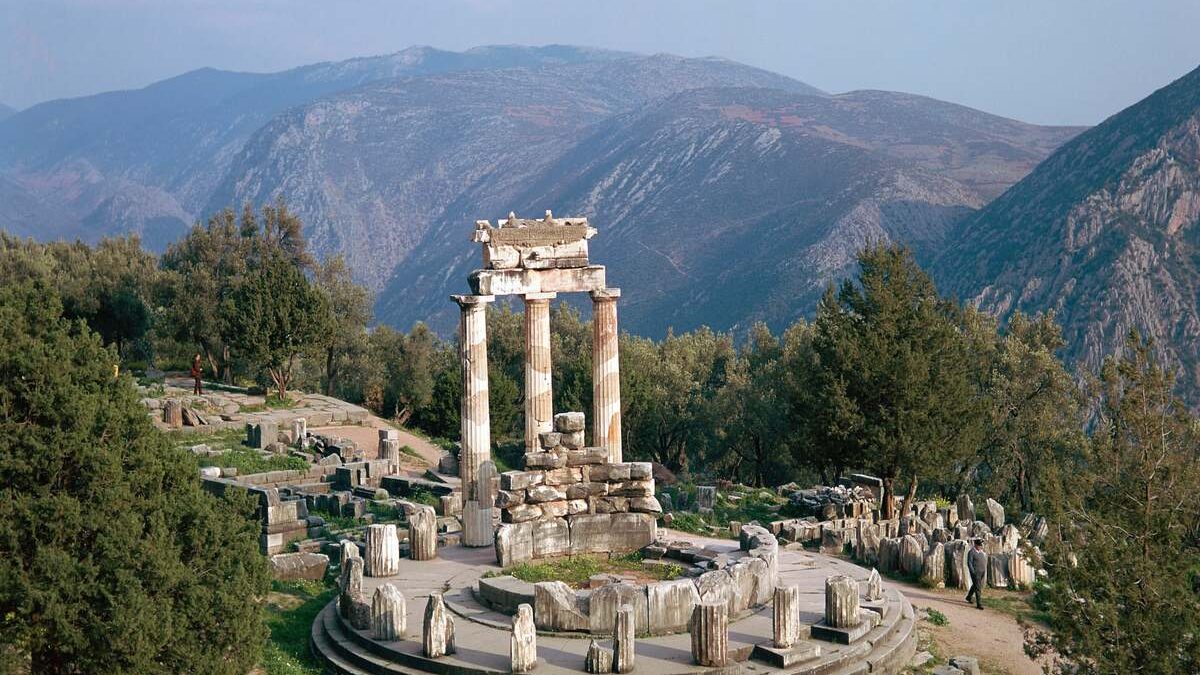
Delphi, Greece: A Journey to the Navel of the Ancient World
Delphi, located on the slopes of Mount Parnassus in central Greece, is one of the most significant archaeological sites in the world. Known in antiquity as the “navel of the world,” Delphi was home to the famous Oracle of Apollo and played a central role in the religious and cultural life of ancient Greece. This comprehensive guide provides tourists with detailed information about Delphi, including its history, major attractions, cultural significance, and practical tips for visiting. This unique and informative article aims to offer a complete perspective on one of Greece’s most revered and fascinating destinations.
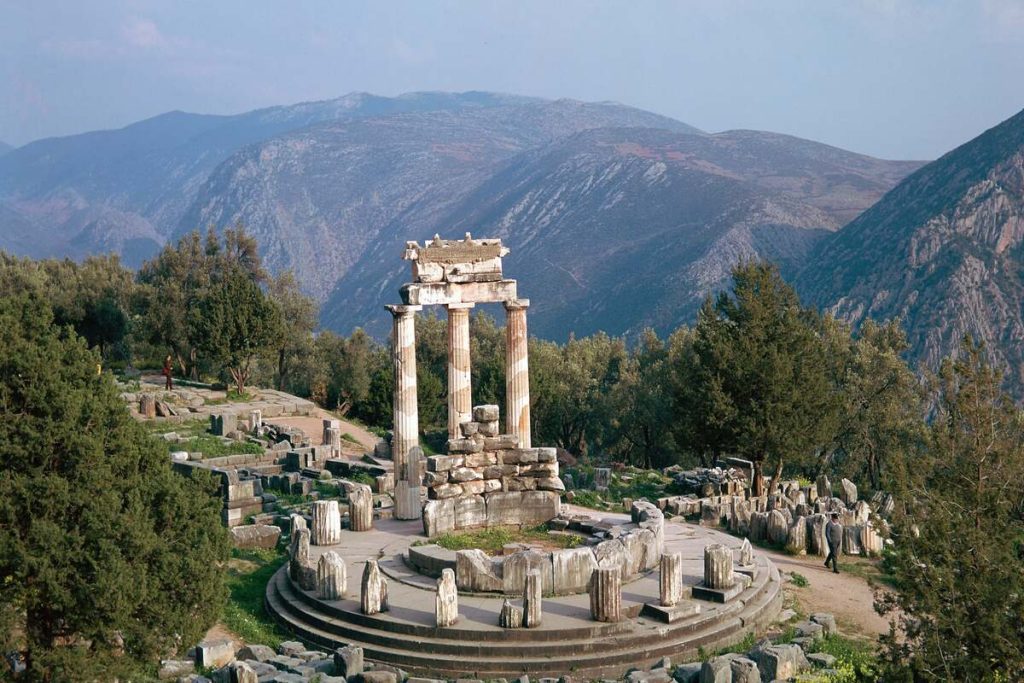
Historical Background
Mythological Origins: According to Greek mythology, Zeus released two eagles from opposite ends of the world, and they met at Delphi, marking it as the center of the world. The site was sacred to Gaia (Earth) before Apollo, the god of prophecy, music, and healing, established his sanctuary there after slaying the Python, a serpent that guarded the site.
The Oracle of Apollo: Delphi became famous for the Oracle of Apollo, where the Pythia, a priestess, would deliver prophecies believed to be inspired by Apollo himself. These oracles were highly influential in Greek politics, warfare, and daily life, attracting pilgrims and envoys from across the Greek world.
Historical Development: The sanctuary of Apollo at Delphi was established in the 8th century BCE and flourished until the Roman period. During its peak, Delphi was the site of the Pythian Games, second only to the Olympic Games, and a major cultural and religious center.
Decline and Rediscovery: Delphi’s significance declined with the rise of Christianity and the cessation of the oracles. The site was eventually abandoned and fell into ruin. It was rediscovered in the late 19th century, and extensive archaeological excavations have since revealed its treasures.
Major Attractions
The Sanctuary of Apollo: The central attraction of Delphi is the Sanctuary of Apollo, where the oracle delivered her prophecies. The site includes several significant structures.
- Temple of Apollo: The remains of the Temple of Apollo, originally built in the 4th century BCE, are the focal point of the sanctuary. The temple housed the omphalos stone, believed to mark the center of the world, and the tripod where the Pythia sat to deliver her oracles.
- The Sacred Way: This ancient path leads from the entrance of the sanctuary to the Temple of Apollo, lined with treasuries, monuments, and statues donated by various Greek city-states.
- Treasury of the Athenians: One of the best-preserved structures along the Sacred Way, this treasury was built to commemorate the Athenian victory at the Battle of Marathon and housed offerings to Apollo.
The Theatre of Delphi: Above the Temple of Apollo, the ancient theatre offers spectacular views of the sanctuary and the surrounding valley. Built in the 4th century BCE, the theatre could seat around 5,000 spectators and hosted musical and theatrical performances during the Pythian Games.
The Stadium: Located further up the slope of Mount Parnassus, the stadium is one of the best-preserved in Greece. It could accommodate approximately 6,500 spectators and was the venue for athletic events during the Pythian Games.
The Tholos of Delphi: Situated in the sanctuary of Athena Pronaia, the Tholos is a circular building with a mysterious purpose, thought to be either a temple or a monument. Its unique architecture and location make it one of Delphi’s most photographed sites.
The Castalian Spring: This sacred spring, located near the entrance to the sanctuary, was where pilgrims would purify themselves before consulting the oracle. The spring is named after the nymph Castalia, who, according to myth, was transformed into a spring by Apollo.
The Archaeological Museum of Delphi: This museum houses an extensive collection of artifacts unearthed at the site, including statues, friezes, and everyday objects.
- Charioteer of Delphi: One of the most famous exhibits, this bronze statue dates back to 478-474 BCE and is considered a masterpiece of ancient Greek sculpture.
- Sphinx of Naxos: Another notable artifact, this colossal statue was dedicated to Apollo by the people of Naxos and stood atop a towering column.
- Frieze of the Siphnian Treasury: This intricately carved frieze depicts scenes from Greek mythology and provides insights into the art and culture of the period.

Cultural Significance
Religious Importance: Delphi was one of the most important religious centers in ancient Greece. The oracles of Apollo were believed to be direct communications from the gods, and the sanctuary attracted pilgrims from across the Greek world seeking divine guidance.
Political Influence: The prophecies of the Delphic Oracle had a significant impact on Greek politics. Leaders and city-states consulted the oracle on matters of war, colonization, and governance. The sanctuary also served as a neutral ground for resolving disputes and forging alliances.
Cultural Hub: Delphi was a cultural hub that hosted the Pythian Games, a major festival that included athletic competitions, musical contests, and theatrical performances. The site was also a center for the arts, with numerous sculptures, monuments, and treasuries showcasing the wealth and artistic achievements of the Greek city-states.
Architectural Heritage: The architecture of Delphi reflects the artistic and engineering prowess of ancient Greece. The temples, theatres, and treasuries were built with remarkable precision and adorned with intricate sculptures and decorations.
Practical Tips for Visiting Delphi
Best Time to Visit: The best time to visit Delphi is during the spring (April to June) and autumn (September to October) when the weather is pleasant, and the site is less crowded. The summer months (July and August) can be hot and busy, while the winter months (November to March) are cooler but still suitable for visiting.
Getting There: Delphi is accessible by various means of transportation.
- By Car: Delphi is located about 180 kilometers (112 miles) northwest of Athens. The drive takes approximately 2.5 hours, and there is parking available near the archaeological site.
- By Bus: Regular buses run from Athens to Delphi, with a journey time of around 3 hours. Buses also connect Delphi to other major cities in Greece, such as Thessaloniki and Patras.
- By Tour: Many tour operators offer day trips and guided tours to Delphi from Athens and other cities, providing a convenient way to explore the site.
Opening Hours and Admission: The archaeological site and museum are open year-round, with varying hours depending on the season. The combined ticket for the site and museum is around 12 euros for adults, with discounts for students and seniors.
Guided Tours: Guided tours are available in multiple languages and provide detailed information about the history, architecture, and significance of the site. Audio guides and informational brochures are also available for self-guided tours.
Visitor Tips:
- Wear Comfortable Shoes: The terrain at Delphi is uneven and involves some uphill walking. Comfortable footwear is recommended.
- Plan for the Weather: Delphi can experience variable weather. Bring appropriate clothing and gear, such as a hat, sunscreen, and water for the summer months, and a jacket for cooler weather.
- Stay Hydrated: The archaeological site is extensive, and it’s important to stay hydrated, especially during the warmer months.
- Allocate Enough Time: Plan to spend at least half a day exploring the site and museum thoroughly.
Nearby Attractions: While visiting Delphi, consider exploring other attractions in the area:
- Arachova: A charming mountain village located about 12 kilometers (7.5 miles) from Delphi, Arachova is known for its traditional architecture, local crafts, and vibrant atmosphere.
- Mount Parnassus: The nearby Mount Parnassus offers opportunities for hiking, skiing, and enjoying the natural beauty of the region.
- Hosios Loukas Monastery: Located about an hour’s drive from Delphi, this UNESCO World Heritage Site is one of the finest examples of Byzantine architecture in Greece.
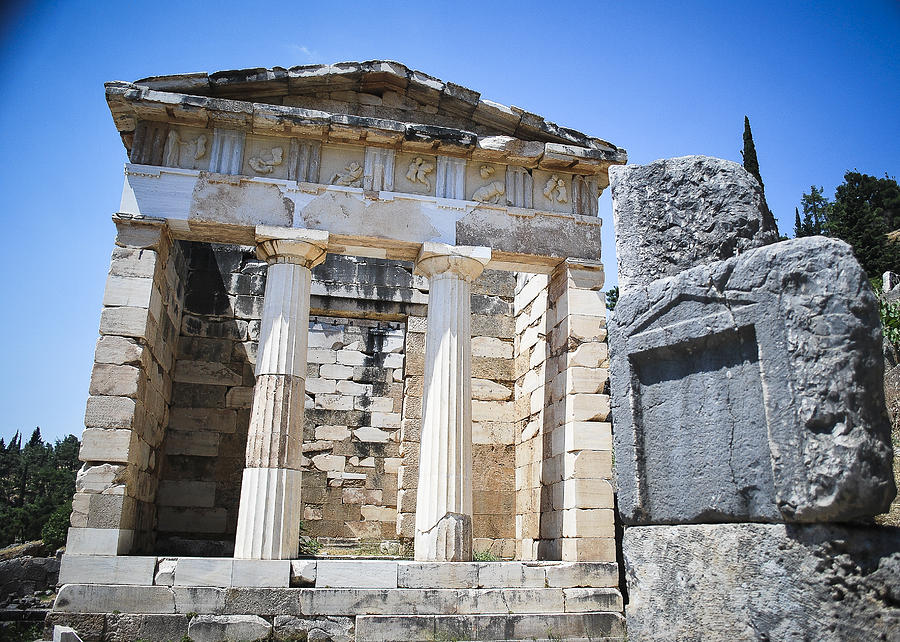
Unique Features and Emotional Impact
Mythological Significance: Standing at Delphi, visitors can feel the weight of its mythological importance. The site’s connection to Apollo and the ancient Greek gods adds a layer of mystique and reverence.
Historical Depth: Delphi’s ruins tell the story of its rise and fall, from its days as a powerful religious center to its decline and rediscovery. Walking through the site, visitors can imagine the pilgrims, priests, and athletes who once filled its temples and theatres.
Architectural Beauty: The architecture of Delphi is a highlight for many visitors. The Temple of Apollo, the theatre, and the treasuries showcase the grandeur of ancient Greek design and craftsmanship.
Scenic Views: The location of Delphi on the slopes of Mount Parnassus provides stunning views of the surrounding valley and mountains. The natural beauty enhances the sense of tranquility and timelessness.
Cultural Richness: Visiting Delphi offers a deep cultural immersion. The artifacts in the museum, the inscriptions on the monuments, and the stories of the oracles all contribute to a rich and engaging experience.
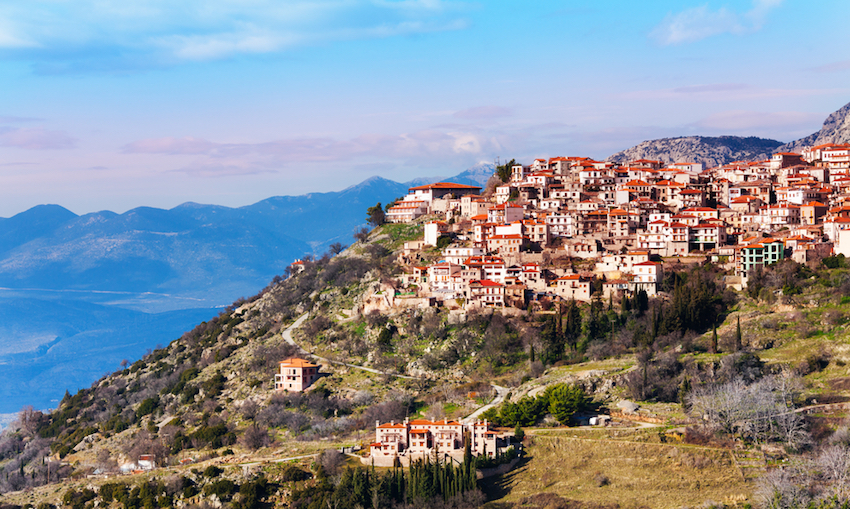
Conclusion
Delphi, with its profound historical and cultural significance, is truly one of the world’s most extraordinary archaeological sites. From the majestic Temple of Apollo and the dramatic theatre to the serene Tholos and the extensive museum collection, Delphi offers a wealth of experiences for visitors.
As a must-visit destination, Delphi invites travelers to immerse themselves in the beauty and grandeur of ancient Greece. Whether exploring the intricate details of the ruins, learning about the legacy of the Delphic Oracle
, or simply enjoying the stunning natural surroundings, visitors are sure to leave with lasting memories.
Plan your visit to Delphi, embrace its unique features and historical significance, and discover why it remains one of the most beloved and iconic destinations in Greece. From its mythological origins and architectural splendor to its cultural heritage and scenic beauty, Delphi offers a magical journey into the heart of ancient Greece.
Links:
-
Delphi, Greece: A Journey to the Navel of the Ancient World
Delphi, Greece: A Journey to the Navel of the Ancient World Delphi, located on the slopes of Mount Parnassus in central Greece, is one of the […]

